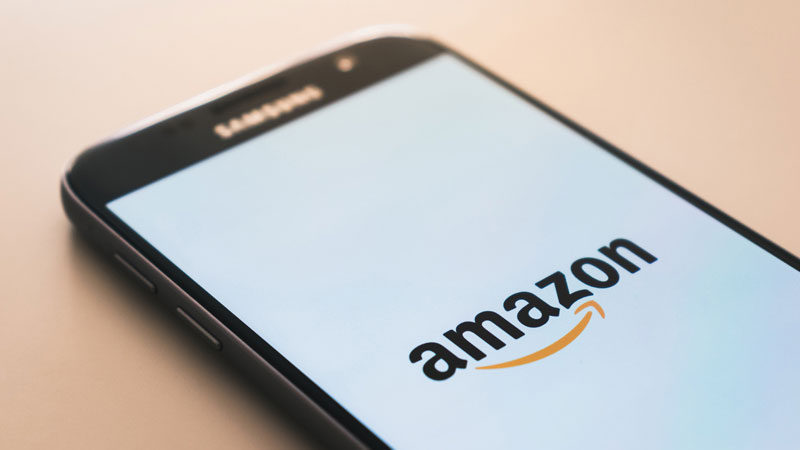Grow your business with the Discover newsletter
Logistics advice & insights straight to your inbox
Subscribe now
Where is e-commerce booming? That’s the key question if you’re an online retailer selling internationally. After all, you’re going to want to invest your time and money where ROI will be worth it. For a long time, there have been the obvious targets – Europe, China, and North America. But there are now several other key markets where e-commerce is having a transformative moment – boosted by factors such as rapid digitalization and high internet penetration rates that now means anyone with a smartphone is a potential customer.
Covid-19 has shifted the game, too. No country was left unaffected, but amidst the devastation has emerged new opportunities. The pandemic triggered an unprecedented worldwide shift towards e-commerce – boosting its share of global retail trade from 14% in 2019 to around 17% in 20201. Added to this, many countries have put in place record Covid stimulus packages to get their economies moving again. All of which means there are still plenty of lucrative cross-border opportunities out there for hungry e-commerce businesses. So, where should you hedge your bets in 2021 and beyond? Read on…
It’s worth us first touching briefly on the Tiger Cub economies. These are five rapidly developing countries in Southeast Asia – Indonesia, Malaysia, Philippines, Thailand and Vietnam – that would have been on the target list of any savvy e-commerce business even pre-Covid. They gained their nickname as they’re following the same growth model of the original Tiger Economies (Hong Kong, Singapore, Taiwan and South Korea) – that is, using exports to drive their economies.
The Tiger Cub countries are investing in technologies and digital infrastructures that are driving up internet penetration rates amongst consumers there, meaning it has never been easier to trade with them. Consider too, Indonesia is the world’s fourth most populated country (with a staggering 275.1 million people2), and the sales opportunities become even more apparent.
Our exclusive article on the Tiger Cub economies shares valuable insights into these markets, including what products consumers there are looking to buy. Dive in, here.

One of the original Tiger Economies, South Korea has kept Covid infection rates relatively low, which has helped economic activity remain resilient. The country also boasts one of the highest per capita incomes amongst the EM (emerging markets) group3, which is driving healthy consumer spending – particularly online, meaning that tapping into ecommerce in South Korea is an enticing prospect. In fact, in 2019, 88.5% of the nation’s population used at least one e-commerce platform, and this is forecast to rise to 94.4% in 20234.
Population: 51.3 million5
Internet user penetration rate: 97%6
How and what are consumers there buying online?
Image and status are important to South Koreans, making luxury and branded goods popular. In September 2020, the leading items purchased online were clothing, footwear, sporting goods and accessories (81.8% of consumers), followed by groceries (51.7%) and kitchen goods (43.8%)7.
Leading payment methods for shopping online (Sept 2019 - Sept 2020):
Source: Statista8

Did you know that Argentina was the country where retail e-commerce grew the most in 2020 – by a staggering 79%?9 Together with Brazil and Mexico, it is driving an exciting turning point for Latin America’s e-commerce sector – in fact, the region led the world in e-commerce sales growth last year10. Much of this can be attributed to the fact that two of its economic hubs – São Paulo, Brazil, and Buenos Aires, Argentina – have endured some of the world’s strictest lockdowns since the pandemic hit. Many consumers turned to online shopping for the first time, and now they’ve experienced the convenience and ease of it, they’ll be staying, which is good news for businesses looking for thriving new markets. Let’s take a closer look at the golden trio…
Population: 45.6 million11
Internet user penetration rate: 72%12
How and what are consumers there buying online?
The country has been through several economic crises over the past two decades, which means consumers are conservative with their money, prioritising price and value for money when shopping. International brands looking to tap into this market should offer discounts and free shipping to lure customers. Electronics and media is the largest e-commerce category, followed by fashion, then furniture and appliances13.
Leading payment methods for shopping online (2020):
Source: Statista14

Population: 214.25 million15
Internet user penetration rate: 68.1%16
How and what are consumers there buying online?
Like the Argentinians, Brazilian consumers are cost savvy and will shop around to find the best prices available. Customer service is important, too: 41% said they would stop using a brand because of poor customer service17 – more than any other country – so investing in your customer communications during and after a sale is crucial.
In 2020, the most popular e-commerce product categories were fashion and accessories (19.9%), beauty, perfumes and health (14.4%), and entertainment (12.8%)18. In fact, Brazil is one of the biggest markets for beauty products in the world19.
Leading payment methods for shopping online:
Credit cards are used in 69% of all online payment transactions20. However, international retailers should be aware of the differences between domestic-only and international credit cards: though the latter can process in both foreign and local currencies, only 20% of Brazilian buyers have access to these cards21 so cross-border merchants should offer localized payment options, too.

Population: 130.46 million22
Internet user penetration rate: 65%23
How and what are consumers there buying online?
Amazon launched in Mexico in 2015, and now has over 50 million customers there24. The online marketplace provides an easy(ish) route to Mexican buyers, but foreign sellers should be aware of certain challenges – the need for Spanish-speaking customer service agents, and that processing returns requires an in-country address.
International brands should target ‘Hot Sale’, a week-long e-commerce sales event that takes place in Mexico each May, and ‘El Buen Fin’, its very own version of Black Friday. The most popular product categories during El Buen Fin in 2020 were fashion, electronics and home appliances25.
Leading payment methods for shopping online:
Currently, only around a third (37%) of the population has a bank account26. Thus, smartphones and apps with digital wallet options are popular – and are a major factor driving the country’s rapid adoption of mobile commerce. Ensure your e-commerce website is optimized for mobile to attract consumers there.

India is one of the BRIC economies – consisting also of Brazil, Russia and China (and a later addition of South Africa) – which are forecast to become leading suppliers of manufactured goods, services, and raw materials by 205027. Despite being severely impacted by the pandemic, the growth outlook for India remains positive, driven by its favorable demographics and rising consumerism. It’s forecast to be the number one country for retail e-commerce sales growth in 2021, at +27% – an impressive number that seems even more so when you consider the population size, meaning that it is still an attractive market for those looking to sell to India. 28
Population: 1.39 billion29
Internet user penetration rate: 45%30
How and what are consumers there buying online?
Mobile commerce is big business in India, and is projected to grow 21% annually over the next four years31. The leading e-commerce segments (based on market share) as of January 2020 were airlines and hotels (16%), clothing and footwear (13%), and electrical goods (11%)32.
In a recent survey of Indian consumers, the top reasons cited for shopping online in the last year included safer deliveries, competitive prices and ease of returns – features to remember for your sales strategy33.
Leading payment methods for shopping online (as of Jan 2020):
Source: Statista34
It wouldn’t be a complete list without giving a final mention to a perhaps-unsurprising entry: China. The “world’s manufacturer” may have long been an export leader, but what about its imports? What are consumers there buying from international sellers, and how can cross-border merchants tap into the market? Our exclusive guide to China’s e-commerce economy will give you all the insights your business needs to make its mark. Download it now.
For more help tapping into these burgeoning markets, partner with the world’s international experts, DHL.
1 - UNCTAD, March 2021
2 - Investopedia, March 2021
3 - Emerging Markets Equity, Goldman Sachs, March 2021
4 - Santander Trade Markets, 2021
5 - Worldometer, August 2021
6 - Datareportal, February 2021
7 - Statista, published April 2021
8 - Statista, published August 2021
9 & 10 - Latin America Business Stories, January 2021
11 - Worldometer, August 2021
12 - Statista, published July 2021
13 - ecommerceDB, 2020
14 - Statista, published July 2021
15 - Worldometer, August 2021
16 - Statista, published July 2021
17 - Latin America Business Stories, July 2021
18 - Statista, published July 2021
19 - Santander Trade Markets, 2021
20 & 21 - The Paypers, accessed August 2021
22 - Worldometer, August 2021
23 - Statista, published July 2021
24 - Statista, published October 2020
25 - Statista, published July 2021
26 - J.P. Morgan Global Payment Trends, 2019
27 - Investopedia, December 2020
28 - eMarketer, July 2021
29 - Worldometer, August 2021
30 - Statista, published August 2021
31 - Mint, March 2021
32 - Statista, published April 2021
33 - Tech Radar, March 2021
34 - Statista, published April 2021